
Severe Turbulence Anxiety: 7 Expert Techniques to Conquer Your Fear of Flying
Flying rattles a lot of nerves, especially when the plane starts shaking. For plenty of travelers, severe turbulence anxiety can turn a routine trip into a downright frightening ordeal.
This fear is surprisingly common, but you can manage it with the right understanding and a few reliable strategies. It’s all about regaining some control when the bumps hit.
Most of this anxiety comes from not really understanding what turbulence is. Those unnerving shakes? They’re just unstable air pockets—think of potholes in the sky. Modern planes are built to handle them, even the rough stuff.
Your body’s fight-or-flight response jumps into action during turbulence, so what’s actually safe can feel way more dangerous than it is.
Table of Contents
- Key Takeaways
- Understanding Severe Turbulence Anxiety
- Defining Turbulence Anxiety
- How Turbulence Triggers Anxiety
- Distinguishing Severe Anxiety From Typical Flight Anxiety
- The Science Behind Turbulence
- Nature of Turbulence in Aviation
- Types of Turbulence
- Flight Safety and Aircraft Design
- Psychological Factors in Severe Turbulence Anxiety
- Fear of Losing Control
- Irrational Fears and Catastrophic Thinking
- Physical and Emotional Symptoms
- Common Triggers and Causes
- Previous Negative Flight Experiences
- Media and Social Influences
- Coping Strategies for Severe Turbulence Anxiety
- Evidence-Based Self-Help Techniques
- Grounding and Distraction Methods
- Relaxation and Breathing Methods
- Relaxation Techniques for In-Flight Anxiety
- Deep Breathing and 4-7-8 Breathing
- Progressive Muscle Relaxation
- Meditation and Mindfulness
- In-Flight Strategies for Immediate Relief
- Seat Selection and Flight Planning
- In-Flight Entertainment and Distraction
- Hydration and Physical Comfort
- Professional Help and Treatment Options
- When to Seek a Mental Health Professional
- Cognitive Behavioral Therapy for Turbulence Anxiety
- Medications for Managing Severe Anxiety in Flight
- Types of Anti-Anxiety Medications
- Consulting With a Healthcare Provider
- Emerging and Innovative Approaches
- Virtual Reality Simulations
- Support Groups for Turbulence Anxiety
- Frequently Asked Questions
- What strategies can travelers implement to cope with anxiety during rough flights?
- Which flight paths are known to experience the least amount of atmospheric disturbances?
- Are there certain times of year when flying is less likely to encounter bumpy conditions?
- Could embracing the experience of a turbulent flight actually alleviate apprehension for nervous passengers?
- How do seasoned pilots manage their own comfort and maintain calm in the cockpit amidst heavy turbulence?
- What are the actual risks associated with airborne turbulence that passengers should be aware of?
- Book Your Dream Experience
- More Travel Guides
Key Takeaways
- Severe turbulence anxiety usually comes from misunderstanding flight mechanics. Planes are tough enough to handle even wild air.
- Simple things like deep breathing and mindfulness can seriously help anxiety symptoms during turbulent flights.
- There are both in-flight tricks and professional treatments that can turn flying from terrifying into something manageable.
Understanding Severe Turbulence Anxiety
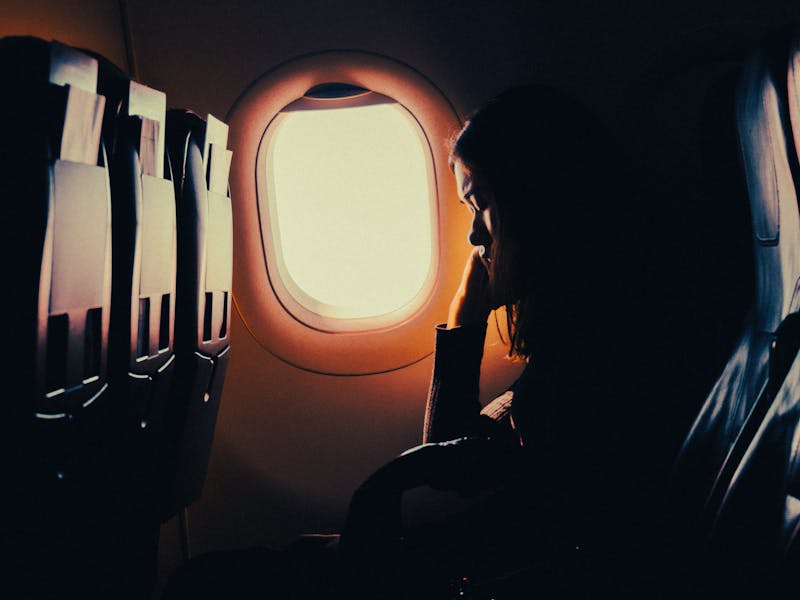
Turbulence anxiety affects plenty of folks and can turn a trip you’re looking forward to into something you dread. When that fear ramps up, some people even avoid flying altogether or feel extreme stress every time they board.
Defining Turbulence Anxiety
Turbulence anxiety is that particular fear of the unpredictable bumps planes hit mid-air. Trust me, even seasoned travelers sometimes grip the armrests when the seatbelt sign dings.
It’s really about losing control when the plane jerks unexpectedly. Your brain sounds the alarm, triggering fight-or-flight, even though the plane’s just fine.
Some people feel a quick jolt of nerves and move on. Others get hit with:
- Intense dread before and during flights
- Physical symptoms like sweating, nausea, or a racing heart
- Catastrophic thoughts about crashing
- Avoiding flights altogether, opting for endless car rides instead
How Turbulence Triggers Anxiety
Your body’s alarm systems exist to keep you safe, but they can go overboard. Turbulence sets off that system.
The drop or shake messes with your inner ear, making your senses disagree. That disconnect can bring on anxiety or even nausea.
Your mind might start spinning out disaster scenarios. Even if you know turbulence is normal, it’s easy to imagine something’s seriously wrong.
Being stuck in a metal tube with no escape doesn’t help. Not being in control just ramps up the anxiety. Every bump can reinforce that cycle.
Physical sensations fuel anxious thoughts, which then make your body react more—before you know it, you’re caught in a feedback loop.
Distinguishing Severe Anxiety From Typical Flight Anxiety
Most people get a little tense during turbulence. That’s normal. Severe turbulence anxiety, though, goes way beyond that.
Watch for:
- Panic attacks before or during turbulence
- Losing sleep for days before flying
- Obsessively checking weather forecasts
- Using meds or alcohol just to get through turbulence
- Canceling trips because of turbulence forecasts
Mild anxiety won’t stop you from traveling when you need to. Severe anxiety might make you skip work trips or miss family gatherings.
Sometimes, this fear ties into bigger anxiety issues or phobias. If you panic in other situations where you’re not in control, turbulence might just be part of a bigger pattern.
The Science Behind Turbulence

Knowing what turbulence really is can take the edge off your anxiety. Turbulence is just a normal part of flying, caused by natural atmospheric changes. Modern planes are built to shrug it off.
Nature of Turbulence in Aviation
Turbulence is just choppy air. Imagine a river that runs smooth in some places and gets bumpy over rocks in others. Air does the same thing, especially when air masses collide or air flows over mountains.
Most turbulence is mild—just a few bumps or a bit of rocking. It might feel like your stomach drops, kind of like when you drive over a small hill.
You’ll usually hit turbulence near thunderstorms, in jet streams, or flying over mountains. Pilots keep an eye on weather reports to dodge the worst of it.
Types of Turbulence
Clear air turbulence (CAT) sneaks up on you in cloudless skies, often near jet streams. That’s why pilots might flip on the seatbelt sign even when everything looks calm outside.
Flying over mountains? You might hit mountain wave turbulence—air currents go up and down for miles after passing over the peaks.
Thermal turbulence pops up when the sun heats the ground, causing warm air to rise. Afternoon flights, especially in summer, can get bumpy because of this.
Wake turbulence happens when your plane flies through the invisible trail left by another aircraft—think of a boat’s wake but in the air.
Flight Safety and Aircraft Design
Modern planes are seriously tough. Engineers design wings to flex—some can bend up to 90 degrees during extreme tests and still hold up. That flexibility helps soak up the bumps.
Pilots train extensively for turbulence. They know how to adjust speed and altitude to find smoother air. Weather radar helps them spot and avoid big storms.
Serious injuries from turbulence are incredibly rare. The FAA reports only about 30 passengers and 116 crew members get seriously hurt by turbulence each year, out of billions who fly.
Next time you feel a jolt, remember: for the plane, it’s just another day at the office. It’s not falling—it’s just riding air currents, a lot like a boat on choppy water.
Psychological Factors in Severe Turbulence Anxiety
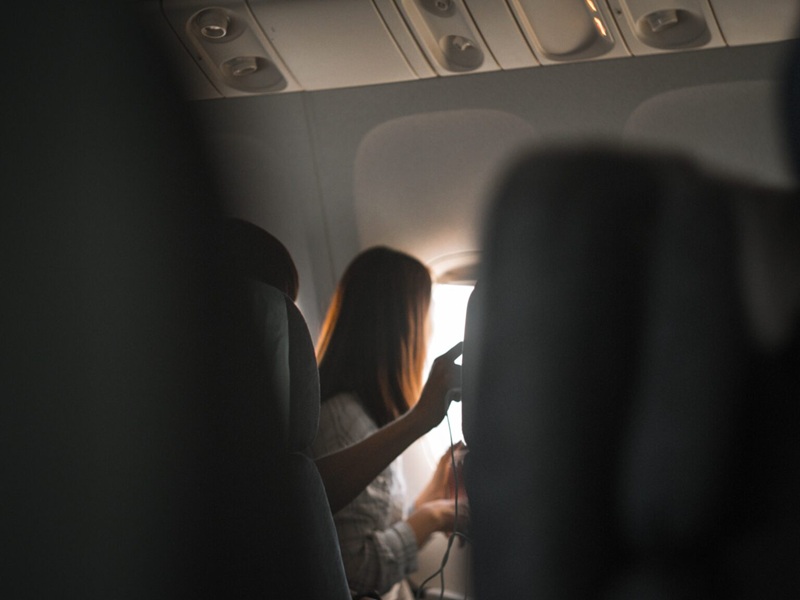
When turbulence strikes, your mind can become your own worst enemy. Understanding how your brain works during these moments can be a game-changer.
Fear of Losing Control
That gut-wrenching feeling during turbulence? It usually boils down to not having any control at 35,000 feet. You’re strapped in and along for the ride.
I’ve chatted with so many travelers who say this is the hardest part. Your brain flags this lack of control as a threat, triggering your body’s stress response—even if you’re perfectly safe.
If you’re someone who likes to be in charge, turbulence can really magnify those feelings. The tight quarters don’t help, making you feel stuck with nowhere to go.
Irrational Fears and Catastrophic Thinking
Your mind might jump straight to the worst-case scenario when the plane shakes. Suddenly, a little turbulence becomes a disaster in your head.
Some common thoughts I hear:
- “The plane’s going to break apart!”
- “We’re going to crash!”
- “Something’s wrong with the plane!”
Even though turbulence is just part of flying and pilots are trained for it, your brain loves to spin up these stories.
Confirmation bias makes things worse. You remember every news story about air incidents, but forget the millions of smooth flights. This makes the fear seem way more real.
Physical and Emotional Symptoms
Turbulence anxiety can hit hard physically and emotionally:
- Physical: Heart pounding, sweating, tense muscles, shortness of breath, nausea
- Emotional: Panic, dread, helplessness, irritability
- Mental: Racing thoughts, trouble focusing, hyper-alert to every noise
These symptoms feed into each other. Feeling sick makes you more anxious, which makes you feel even worse. It’s a vicious cycle.
Some travelers start feeling anxious days before flying. That anticipation can wreck your sleep and mood, and if it goes unchecked, it can turn into a real anxiety disorder.
Common Triggers and Causes
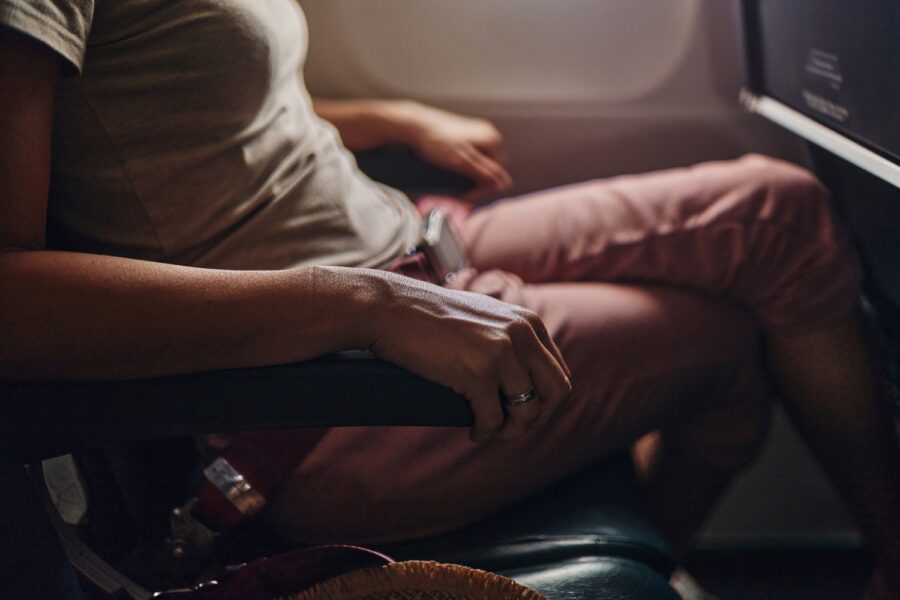
Turbulence anxiety doesn’t come out of nowhere. Different travelers have different triggers, and knowing yours is half the battle.
Previous Negative Flight Experiences
If you’ve ever had a rough flight, your brain probably remembers every second. That memory can make you anxious the next time you fly.
I’ve met people who can trace their fear back to one particularly bad flight—even years later, even minor bumps can set off panic.
Flight attendants see this all the time. Passengers who’ve had a scary flight before often sweat, grip the armrests, or even cry when turbulence starts.
Your body’s just trying to protect you, even if it’s overreacting.
Media and Social Influences
Movies and news love to dramatize turbulence. Hollywood turns a little shake into a disaster scene, but that’s not reality.
Social media doesn’t help either. Dramatic turbulence videos go viral, while the millions of smooth flights never make the news. That skews your sense of risk.
Stories from friends and family can plant seeds of worry, even if you’ve never had a bad flight yourself.
News outlets usually only report on the rare turbulence injuries, leaving out the fact that modern planes can handle much more than what passengers experience.
Coping Strategies for Severe Turbulence Anxiety
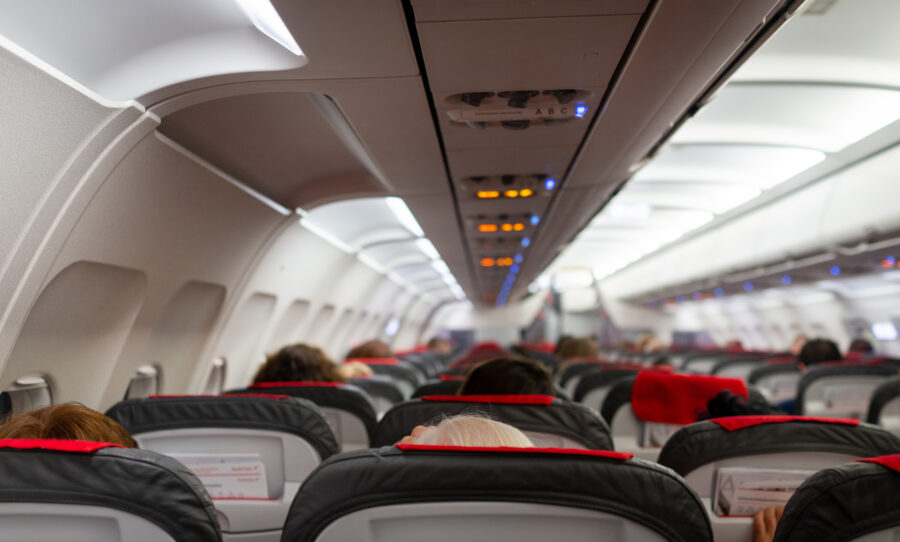
You need more than just wishful thinking to get through severe turbulence anxiety. These techniques can help calm your mind and body, both before and during your flight.
Evidence-Based Self-Help Techniques
Learning the facts about turbulence can really help. Planes are made to handle much stronger forces than you’ll ever experience in the air.
Try keeping a flight journal. Jot down your anxiety levels before, during, and after flights. You’ll start to notice patterns and, hopefully, progress.
Cognitive behavioral therapy (CBT) techniques are a solid bet. Ask yourself, “What’s the real evidence that this is dangerous?” or “How likely is it that something bad will actually happen?”
Get a little exposure therapy by watching turbulence videos before you fly. Oddly enough, it can help desensitize your nerves.
Look into fear of flying courses. Airlines often offer these, with pilots breaking down turbulence and safety measures in plain language.
Grounding and Distraction Methods
When turbulence hits, plant your feet firmly on the floor. Feel that connection—it’s grounding, literally.
Try the 5-4-3-2-1 technique: spot five things you see, four you can touch, three you hear, two you smell, and one you taste. It pulls you out of your head and back into the moment.
Bring along entertainment that really grabs your attention. Download a movie, a podcast, or a compelling audiobook. Puzzle games on your phone can be surprisingly absorbing.
Strike up a conversation with your seatmate or a friendly flight attendant. Human connection can work wonders when you’re feeling anxious.
Relaxation and Breathing Methods
Practice the 4-7-8 breathing trick: inhale for 4 seconds, hold for 7, exhale for 8. It’s simple but can really calm your nerves fast.
Download a guided meditation app for flight anxiety. Some sessions are only five minutes—perfect for when you hit a rough patch.
Progressive muscle relaxation can help too. Start at your toes, tense each muscle group for five seconds, then let go. Move up your body. It melts away tension.
Try a little acupressure—press gently on your wrists or between your eyebrows. Some folks swear by it for calming nerves.
Drink plenty of water. Skip the coffee and booze; they’ll just make you jittery or dehydrated, which never helps anxiety.
Relaxation Techniques for In-Flight Anxiety

When turbulence kicks in and your heart pounds, having a few calming techniques ready can make a real difference. Even at 30,000 feet, you can help your body relax if you know what to do.
Deep Breathing and 4-7-8 Breathing
Deep breathing is honestly one of the best tools I know for turbulence anxiety. When panic creeps in, try this: breathe in slowly through your nose for 4 seconds, really fill your lungs. Hold it for 7 seconds—yeah, it feels long—then let it out through your mouth for 8 seconds. This 4-7-8 rhythm actually kicks your parasympathetic nervous system into gear, which is just a fancy way of saying it helps you chill out.
I always suggest placing one hand on your chest and the other on your stomach. That way, you can tell if you’re breathing from your diaphragm instead of just your chest. Cycle through this 3 to 5 times whenever turbulence gets rough.
Pair your breathing with a phrase like “I am safe” as you exhale. It sounds simple, but it interrupts those spiraling anxious thoughts that love to show up mid-flight.
Progressive Muscle Relaxation
Your body stores tension when anxiety hits—Progressive Muscle Relaxation (PMR) lets you release it. Start at your toes and move up, tensing each muscle group for about 5-10 seconds, then letting go completely. Notice how different your muscles feel when relaxed versus tense.
Here’s a quick rundown:
- Feet: Curl your toes, hold, release.
- Calves: Point your toes up, hold, release.
- Thighs: Squeeze knees together, hold, release.
- Abdomen: Tighten your stomach, hold, release.
- Shoulders: Shrug up to your ears, hold, release.
- Hands: Make fists, hold, release.
I’ve used this during long, bumpy stretches and it works wonders. Plus, it’s subtle—nobody’s going to notice you doing it.
Meditation and Mindfulness
Mindfulness keeps you anchored in the moment instead of spiraling about what could go wrong. Focus on something tangible—the armrest under your fingers or the hum of the engines.
When anxious thoughts pop up (and they will), just notice them without judgment and gently bring your attention back. I like using the “5-4-3-2-1” method:
Spot 5 things you can see, 4 you can touch, 3 you hear, 2 you smell, and 1 you taste. This sensory exercise really disrupts anxiety’s grip.
If you’re a frequent flyer, practice these before your trip. The more you do them, the more automatic and helpful they’ll become when you’re actually in the air.
In-Flight Strategies for Immediate Relief
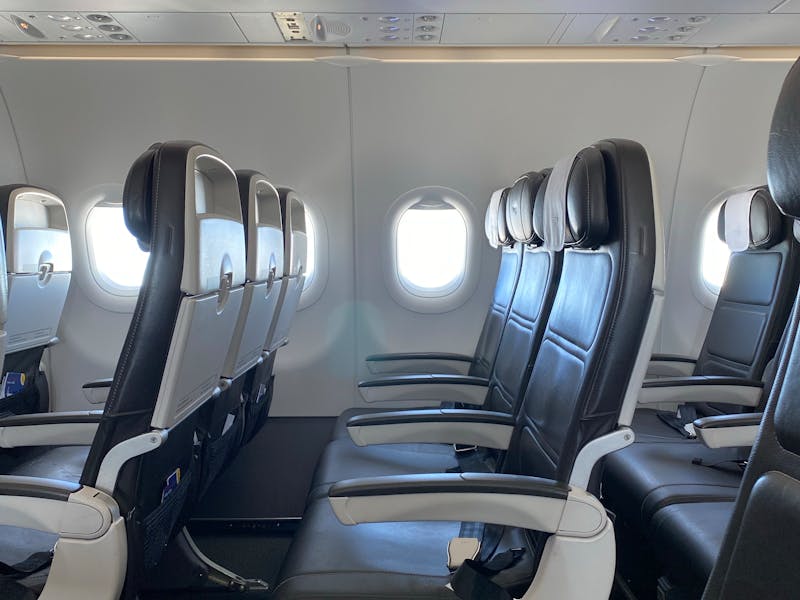
When turbulence hits, having a few solid tricks up your sleeve can honestly make or break the flight. With the right strategies, you can regain control, even if things get bumpy.
Seat Selection and Flight Planning
Pick your seat carefully! The middle section over the wings is the most stable spot on the plane. If you can, book morning flights—less turbulence since the ground hasn’t heated up yet.
I always check turbulence forecasts with apps like Turbcast or SkyGuru before booking. Knowing what to expect helps me mentally prepare.
Let the crew know if you’re anxious. They’re trained to help nervous flyers and might check in on you if things get rough.
Aisle seats work if you get claustrophobic, but I actually prefer the window. Watching the wing flex during bumps reassures me—those wings are built for it.
In-Flight Entertainment and Distraction
Distraction is everything. Load up your phone with movies, podcasts, or audiobooks that really grab your attention. Comedies are my go-to—laughter cuts through anxiety fast.
Noise-canceling headphones are a game-changer. They block out engine noise (which can trigger nerves) and let you sink into your own world.
Puzzles like Sudoku or crosswords keep your brain busy enough that fear doesn’t get a foothold. I always stash a puzzle book in my carry-on for exactly this reason.
Hydration and Physical Comfort
Skip the coffee and booze! Caffeine ramps up anxiety, and alcohol, while tempting, can make things worse as it wears off. Water is your best bet for staying hydrated and steady.
Wear loose, comfortable clothes in layers. Cabin temps change fast, and physical comfort makes a big difference when you’re stressed.
Progressive muscle relaxation is worth repeating mid-flight—tense and release your muscles from toes to head. It sends your brain a “hey, it’s okay to relax” message.
Deep breathing is always in my toolkit. Inhale for 4, hold for 2, exhale for 6. Place a hand on your belly and feel it rise and fall—simple, but surprisingly powerful.
Professional Help and Treatment Options

If turbulence anxiety feels overwhelming, getting professional help can totally change your travel game. There are lots of approaches out there, especially if DIY methods just aren’t cutting it.
When to Seek a Mental Health Professional
If your anxiety keeps you from traveling, or you avoid flights altogether, it’s time to reach out for help. Panic attacks at just the thought of flying, or persistent anxiety despite your best efforts, are solid reasons to see a mental health pro.
Find someone who specializes in anxiety or phobias. Lots of therapists offer online sessions now, which can be less intimidating and super convenient.
Try to schedule appointments well ahead of your trip. That way, you have time to build up coping strategies before you fly. And honestly, seeking help is a smart, proactive move—not a weakness.
Cognitive Behavioral Therapy for Turbulence Anxiety
Cognitive Behavioral Therapy (CBT) is the gold standard for turbulence anxiety. It helps you spot and challenge those “what if” thoughts, and arms you with practical coping tools.
In CBT, you’ll:
- Notice catastrophic thinking about turbulence
- Swap out irrational fears for more realistic ones
- Practice relaxation techniques for flights
- Slowly face your fears with exposure therapy
Exposure therapy might mean watching turbulence videos, visiting airports, or taking short flights. A good therapist will guide you at your own pace.
Some folks see big improvements after 8-12 sessions. These days, some therapists use virtual reality to simulate turbulence in a safe setting, which really helps your brain learn that, while turbulence is uncomfortable, it’s not actually dangerous.
Medications for Managing Severe Anxiety in Flight

If your turbulence anxiety is severe, medication can be a real lifesaver. There are both prescription and over-the-counter options, depending on your needs and how intense your symptoms get.
Types of Anti-Anxiety Medications
Doctors often prescribe benzodiazepines for flight anxiety. Medications like Xanax (alprazolam) or Ativan act fast to calm your nerves, making turbulence feel less threatening.
Valium (diazepam) is another option—some travelers prefer it since it lasts a bit longer. Usually, you’ll take these about 30-60 minutes before your flight or when you start feeling anxious.
If motion sickness triggers your anxiety, Dramamine (dimenhydrinate) can help with nausea and dizziness. That way, you’re not fighting both anxiety and an upset stomach.
Some people use sleep meds like Ambien to just knock themselves out for the flight, but if you’re awake, they won’t really address anxiety itself.
Consulting With a Healthcare Provider
Always talk to your doctor before trying any flight anxiety meds. They’ll help you figure out what’s right for you and make sure it won’t mess with anything else you’re taking.
Your doctor will look at:
- Your medical history
- Other meds you’re on
- Severity of your symptoms
- How long your flights usually are
They might also check if your flight anxiety is part of a bigger anxiety issue that needs broader treatment. Some docs suggest testing the meds at home before you travel, just to see how your body reacts.
And seriously, don’t mix these meds with alcohol—it’s risky. Be open with your doctor about your habits so they can give you safe advice.
Emerging and Innovative Approaches

Travelers now have some pretty cool new options for tackling severe turbulence anxiety. These go beyond just meds and talk therapy, focusing more on real-world experience and community support.
Virtual Reality Simulations
VR therapy has honestly been a breakthrough for fearful flyers. You get to “experience” turbulence in a safe, controlled setting—headset on, realistic cabin sounds and movements, but your feet stay firmly on the ground.
Some airports offer VR sessions before you board. The best ones include a therapist guiding you through breathing techniques as you go through the simulation.
Studies show that just 3-4 VR sessions can cut turbulence anxiety by up to 70% for many folks. The real win? You can practice bumpy flights over and over, without the actual stress of being in the sky.
Support Groups for Turbulence Anxiety
Connecting with others who share your fear can be surprisingly powerful. Online communities like FlyerTalk and the Fear of Flying Forum are full of people swapping tips and success stories.
Some airlines even host in-person groups led by pilots or flight attendants. These sessions often cover:
- Technical info on how planes handle turbulence
- Stories from former anxious flyers
- Real-life tips for staying calm
The mix of emotional support and solid facts makes these groups especially effective. You’ll realize your reactions are totally normal, and you’ll pick up practical tricks from people who’ve been there.
Some groups even organize group flights, so you’re not alone when turbulence hits. It’s a game-changer for a lot of nervous travelers.
Frequently Asked Questions
Turbulence anxiety is way more common than people admit, but there’s a lot you can do to make your next flight smoother. Here are some expert answers to the questions I get most often.
What strategies can travelers implement to cope with anxiety during rough flights?
Breathing techniques really are your best ally. Try the 4-7-8 method: inhale for 4, hold for 7, exhale for 8. It calms your nervous system right down.
Distraction helps too. Download a movie or podcast that’ll keep you hooked. Honestly, losing yourself in a good story can make turbulence feel like background noise.
If your fear is severe, talk to your doctor about anti-anxiety meds. You’re definitely not alone—up to 40% of flyers feel anxious about turbulence.
Which flight paths are known to experience the least amount of atmospheric disturbances?
Flights over oceans tend to be smoother than those over big landmasses or mountains. North Pacific routes (US West Coast to Asia) usually have calmer air than, say, transatlantic flights.
Southern hemisphere routes—like Australia to New Zealand—often dodge the worst turbulence thanks to fewer jet streams and mountains.
I always aim for morning flights. The air is usually calmer before the sun heats things up.
Are there certain times of year when flying is less likely to encounter bumpy conditions?
Fall is usually the smoothest season for flying. The air masses are more stable, so there’s less turbulence.
Summer brings more storms and thermal bumps, especially over land in the afternoon. Winter means stronger jet streams, which can make things choppy up high.
If you can, avoid flying during monsoon (Asia, June-September) or hurricane season (Caribbean, June-November).
Could embracing the experience of a turbulent flight actually alleviate apprehension for nervous passengers?
Yes, reframing turbulence as just a normal part of flying—not a sign of danger—can really help. It’s like driving over potholes: not fun, but not unsafe.
Exposure therapy supports this idea. Start with short flights, build up to longer ones, and let your comfort grow.
Some travelers find that learning about flight physics helps. Knowing that planes are built to flex and handle rough air can turn fear into curiosity.
How do seasoned pilots manage their own comfort and maintain calm in the cockpit amidst heavy turbulence?
Pilots lean on their training and experience. They’ve seen turbulence countless times and know exactly what to do, which keeps their stress low.
They actively avoid turbulence when possible—talking to air traffic control, using weather radar, and adjusting altitude.
When they can’t avoid it, they stick to their routines: gentle adjustments, clear communication, and keeping passengers in the loop. It’s all about staying steady and reassuring everyone on board.
What are the actual risks associated with airborne turbulence that passengers should be aware of?
Honestly, serious injuries from turbulence almost never happen. Most of the time, it’s folks not wearing their seatbelts who get hurt—that’s really why that seatbelt sign matters more than you might think.
Planes these days? They’re built tough. Engineers design them to handle way more than the worst turbulence you’ll ever feel, even if it feels like the wings are about to fall off (they’re not, by the way).
What actually causes problems? It’s not the turbulence itself, but stuff flying around the cabin. I always tell people: if you’ve got a heavy bag, stash it under the seat in front of you, especially if the crew mentions rough air ahead. Overhead bins are just not your friend during bumpy flights.



